Your cart is empty
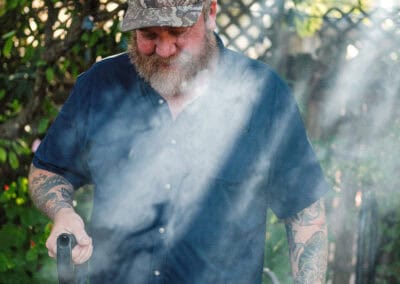
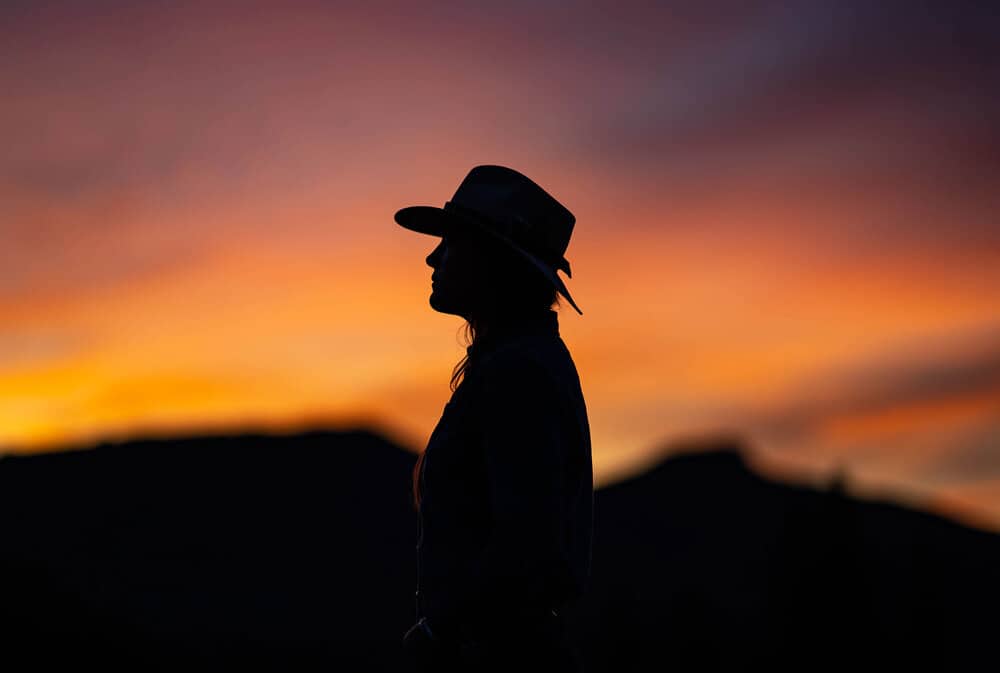
Kay Foye has working hands. Rough, often dirty, the signs of her trade are cut and burned forever into her skin. It’s easy to assume they have always looked that way, that they have been shaped by her forge, just as she shapes the knives that emerge from it. In some ways, that assumption is true. Her experiences are layered in her hands. Keyboards, pens, ropes and reins, hot dinner plates, the soft cushion of a yoga mat. Three-and-a-half decades of living and searching for what feels right.
A patchwork of yesterdays have led to this point in her story. The knives that leave her workshop illustrate that. Mason jars of bone, metal, wood, stone, crystal, antler, and countless items with significance to her and many others fill her collection, each with the potential to unlock memories that become buried as time passes. Many of her clients send her objects that are dear to them, priceless trinkets to be transformed into a blade handle. Kay cherishes the opportunity to create something beautiful that represents lives well lived, loved ones, and special moments in time. Today, Kay Foye is a knifemaker, a title earned over years of gut decisions that have created harmony in her being.
As a young girl, Kay would disappear for hours in the forests and streams of her youth, and every day she would return with something to keep. Her mother provided small wooden boxes to house her daughter’s treasure trove of rocks and sticks, though their significance was a mystery to her. Curiosity defined her adolescence, and after a series of moves around the East Coast, her family eventually settled in Princeton, New Jersey, where her first exposure to horses at the age of 15 led her down a path that would shape the rest of her life. The pull to the horse barn was so strong that she dropped out of high school to work with the animals every day, committing herself to this new fascination. After several years at the barn, Kay earned her GED and began studies at the University of Vermont, where she graduated with a degree in psychology and began working in the fashion industry with J. Crew and Hunter Boots. This meant a new beginning in New York City. Long hours and stress became normal. Airports. Excess. She felt her soul tipping toward someone she didn’t want to be and knew that it was time to change.
Again, horses were the answer.
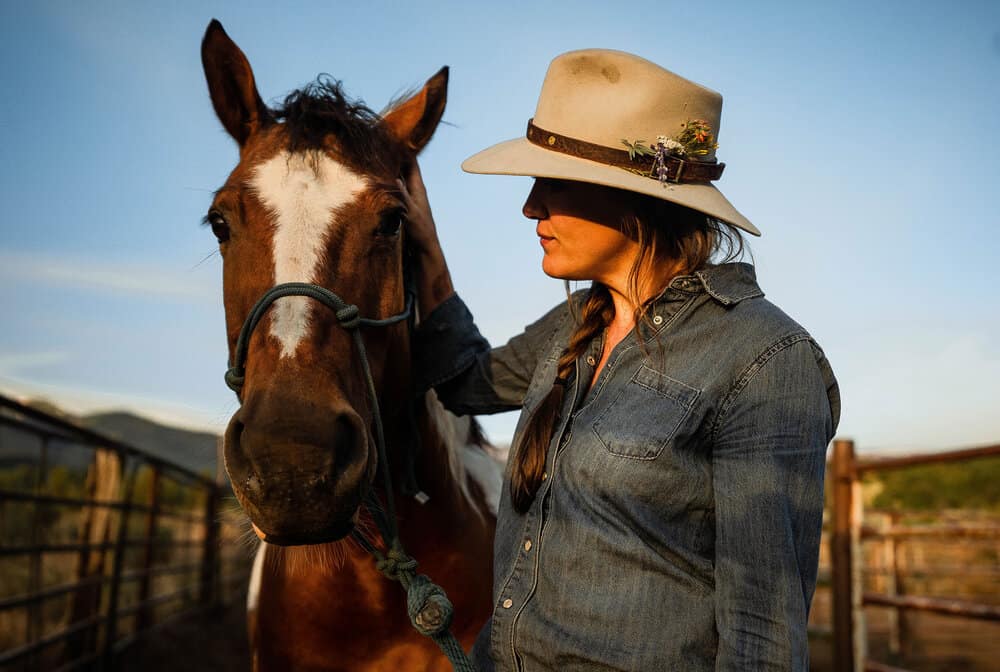
For five seasons, a 30-year-old Kay worked as a wrangler for an outfitter in Aspen, Colorado. This was her opportunity to reconnect with horseback riding, leading people through the mountains and trading stories on the trail. She felt accomplished at the end of the day, and once again began to notice the calm of daily living that had been lost during her time in the city. A knife became at home on her belt, its weight a reassurance, its absence a distress. She truly began to understand the many roles that it held in her life. From preparing her food and everyday tasks as a wrangler, Kay was familiar with the function of her knife, that a sharp blade was a good blade. But form was foreign.
Newness began to scratch at her desire for change. Something told her that Aspen wasn’t the existence meant for her, that seasonal jobs in retail and restaurants weren’t the answer and she had to go somewhere else to figure it out. Kay’s lust for adventure embraced change as running toward something rather than away, and after the better part of a decade in Colorado, it was Alaska that called for her.
One way. No planned return. Just go there and live. In preparation for her departure, she discovered the elaborate knives of Jake Asuit and his wife, Kitrina, igniting an indescribable, burning need to create memories with one of their knives in Alaska. Days of conversations led to a solution: after her journey, Kay would apprentice at their workshop in Georgia to learn the process of crafting her own blade and handle.
She followed through. For months, Kay took a crash course in blacksmithing, learning about different alloys, setting a handle and honing an edge. What drew her to Asuit’s work was his mastery of exotic materials like wooly mammoth teeth and walrus ivory, laid over the hypnotizing patterns of Damascus steel. These knives were works of art. As she dove deeper into the technique and pushed herself with different components to set within a handle, an undeniable hum was growing in her heart. Making knives filled her with excitement and wonder in ways that other things had yet to achieve. The process was raw and malleable. She didn’t know where she wanted to take it but knew, without a doubt, that it was what she was supposed to do.
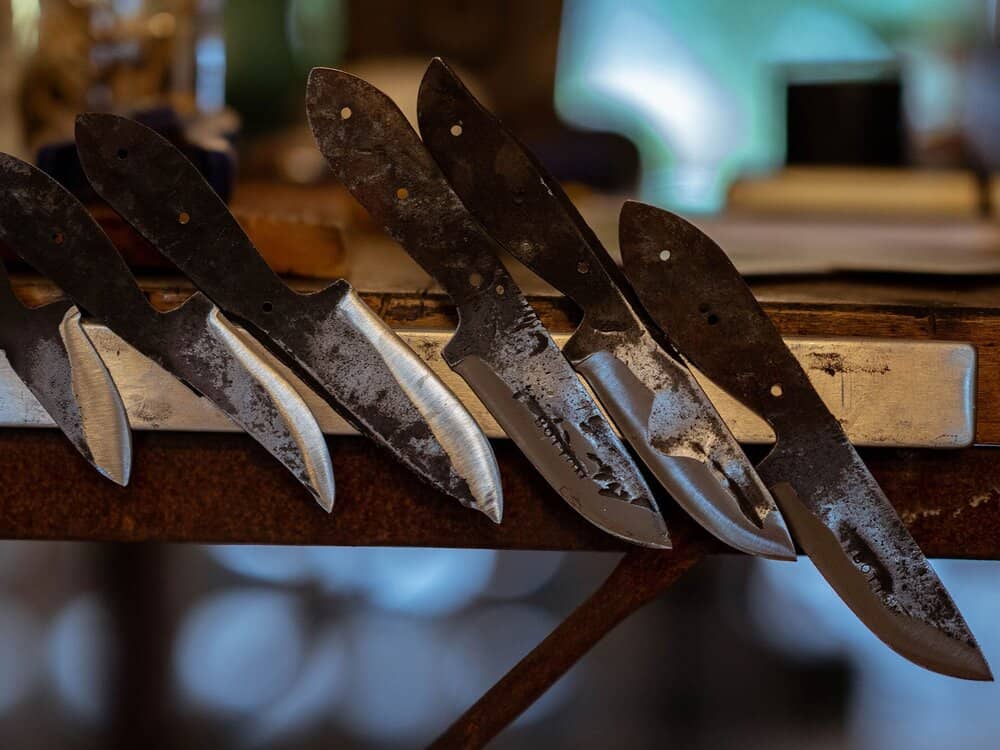
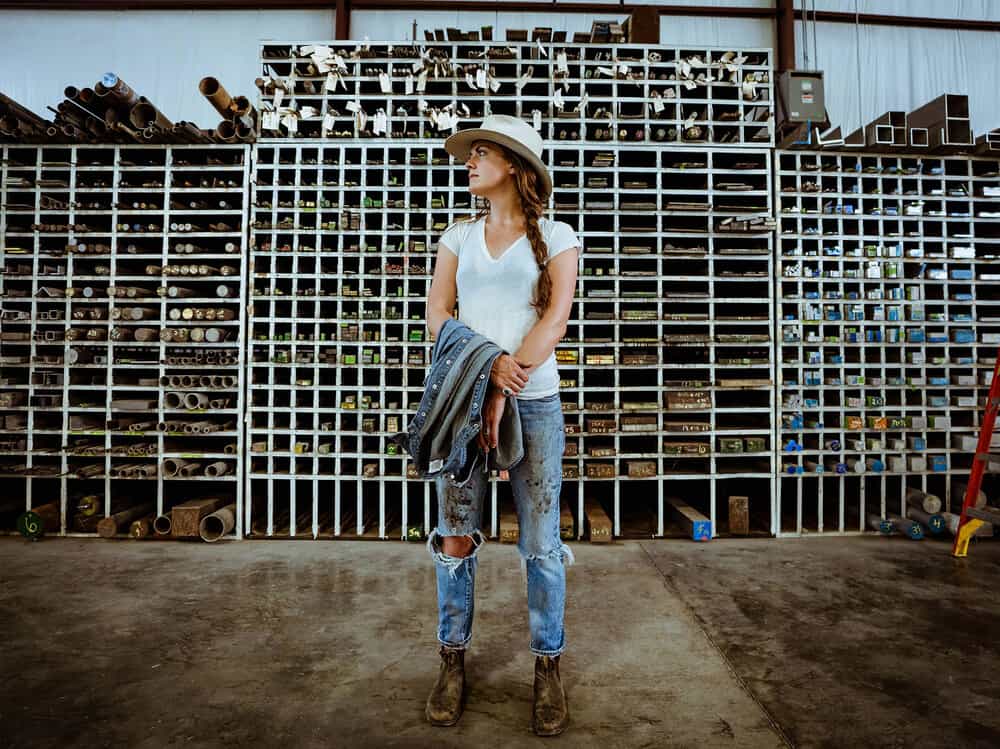
Her time in Georgia came to a close. Though she was broke, without her own materials, a shop, or a complete proficiency in knifemaking, Kay decided that she would continue to make blades on her own. She busied herself with what would become The Homecoming Collection, which allowed her to expand the limits of her potential. Critical support and encouragement from her friends led her to showcase some work at a show in North Carolina. There, she received her first commission from a man who wanted a piece made with wood smuggled from Guantanamo Bay by his father in the 1970s. While this moment was monumental, it seeded a profound idea. Not only could she move forward in her trade without an extensive library, but she could reconstruct memories from someone’s life in something beautiful and unique, a menagerie that shares an individual’s legend.

Ambition required trial, error and experimentation, but Kay’s business grew along with her expertise, and she realized that fate had brought her to this point. Never before had she felt this kind of purpose. Her own story was culminating in these knives, these handles, in sharing the stories of others. Faith took control, with enough strength to overpower the insidious creep of fear and words of doubt that escape from lesser minds that lack resolve. Quitting would have been the easy way out, but a fire had been lit within her. Despite jumping into this endeavor without a business plan or any idea of where it would take her, the pieces began to fall into place as more commissions hit her inbox, pushing her to become better at her new profession.
Slowly, she accumulated enough to boast a collection. Practice refined her technique, and scores upon scores of knives now bear her name. It became evident that knifemaking was not temporary, that it was her path forward. During the holidays of 2018, Kay’s mother visited her workshop for the first time and she proudly introduced her to the latest chapter in her life. With great pride, she took her through the process, the tools, and finally the shelves of mason jars, her hands holding the embossed glass that easily revealed their precious contents. Here, her mother stopped. She realized how all of those seemingly worthless things Kay gathered as a child now had meaning, importance. Every path in Kay’s life has led her here, all along.
Follow Kay on Instagram
Visit www.kayfoye.com to to view her work and inquire about a legacy commission
Related Stories

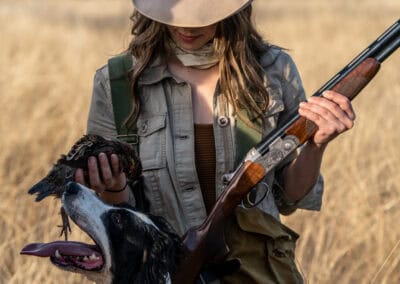

Latest Stories


